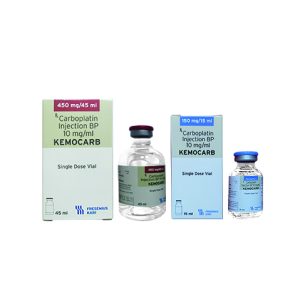The cytotoxic effect of doxorubicin on malignant cells and its toxic effects on various organs are thought to be related to nucleotide base intercalation and cell membrane lipid binding activities of doxorubicin. Intercalation inhibits nucleotide replication and action of DNA and RNA polymerases. The interaction of doxorubicin with topoisomerase II to form DNA cleavable complexes appears to be an important mechanism of doxorubicin cytocidal activity.
Adrim
Doxorubicin
10 mg / 5 ml, 50 mg / 25 ml
The most commonly used dose schedule when used as a single agent is 60 to 75 mg/m2 as a single intravenous injection administered at 21-day intervals.
When used in combination with other chemotherapy drugs, the most commonly used dosage of doxorubicin is 40 to 60 mg/m2 given as a single intravenous injection every 21 to 28 days.
ADRIM (Doxorubicin) has been used successfully to produce regression in disseminated neoplastic conditions such as acute lymphoblastic leukemia, acute myeloblastic leukemia, Wilms’ tumor, neuroblastoma, soft tissue and bone sarcomas, breast carcinoma, ovarian carcinoma, transitional cell bladder carcinoma, thyroid carcinoma, gastric carcinoma, Hodgkin’s disease, malignant lymphoma and bronchogenic carcinoma in which the small cell histologic type is the most responsive compared to other cell types.
ADRIM (Doxorubicin) is also indicated for use as a component of adjuvant therapy in women with evidence of axillary lymph node involvement following resection of primary breast cancer.
ADRIM is available as 5 ml and 25 ml vial containing 10 mg and 50 mg of Doxorubicin Hydrochloride, respectively, as a ready to use solution.




